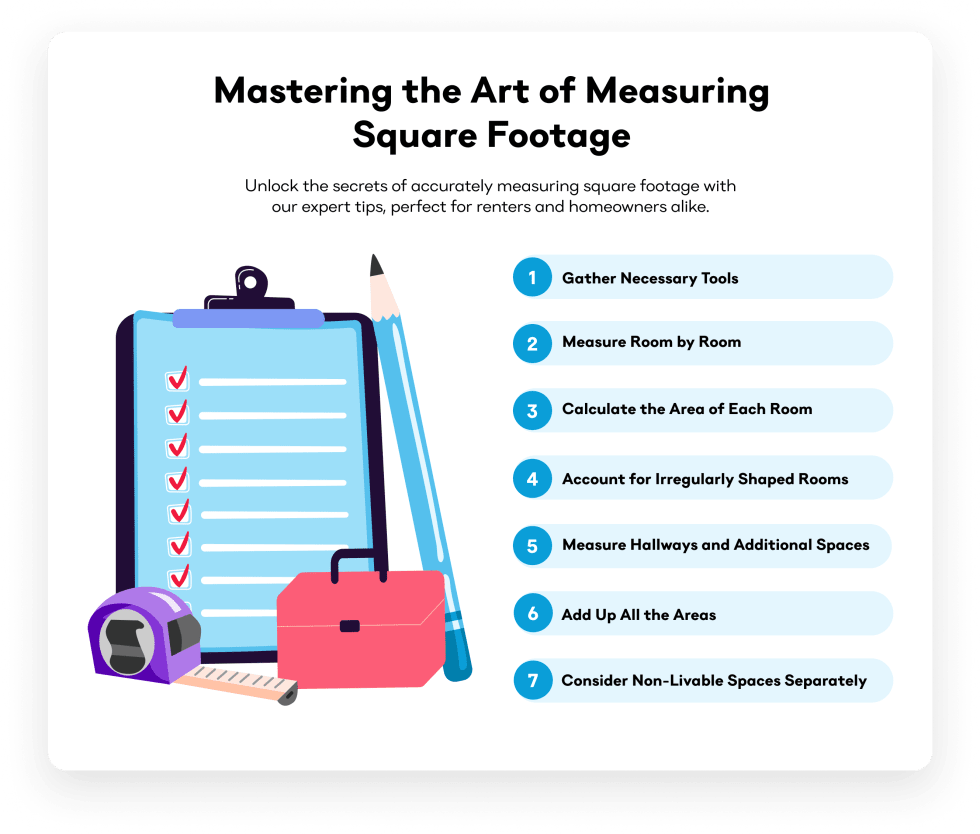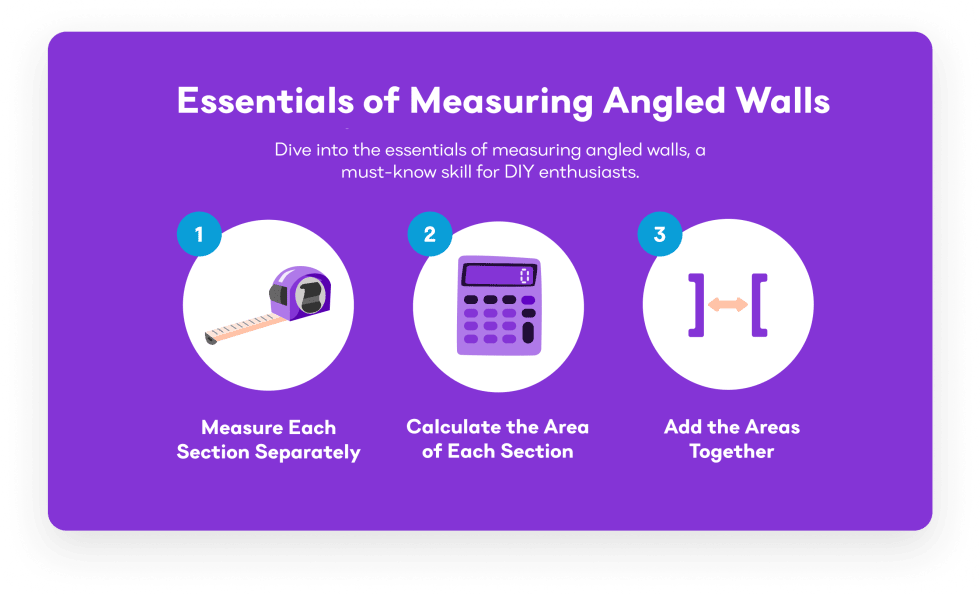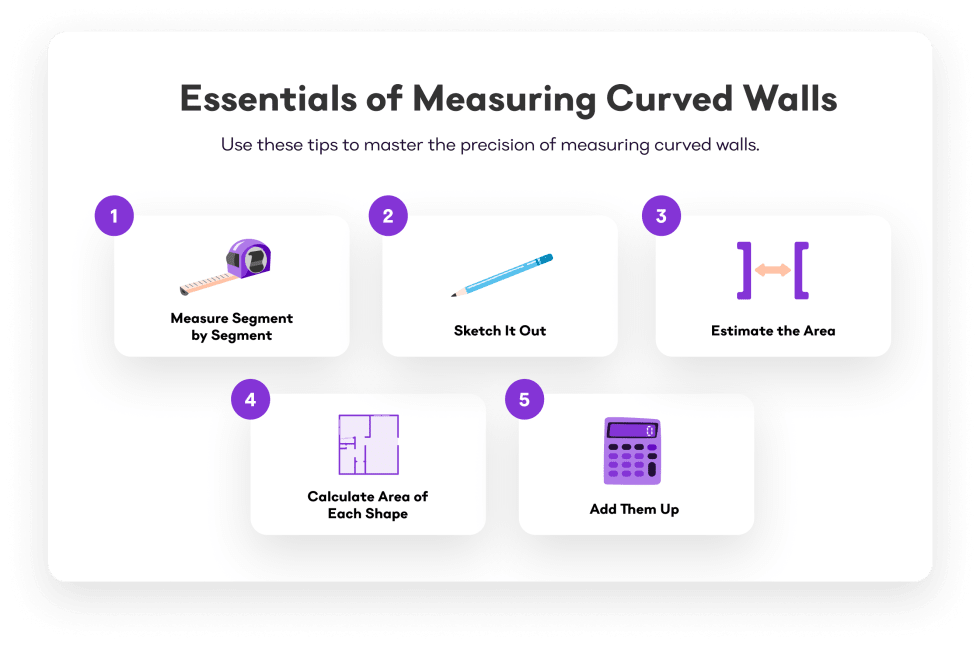South Bank at Quarry Trails
- 94 units available
- Studio • 1 bed • 2 bed • 3 bed
- Amenities
In unit laundry, Patio / balcony, Granite counters, Pet friendly, Stainless steel, Walk in closets + more

Square footage is a key factor in determining a home's value, its spatial possibilities, and its suitability for the resident's needs. However, measuring square footage can be confusing, especially in homes with unusual layouts or non-standard room shapes.
This guide aims to demystify the process, offering clear, step-by-step instructions and tips to ensure accurate and consistent measurements. Whether your home is a perfect square or (somehow) a perfect circle, our guide will provide you with a master class in square footage.
Square footage is a vital metric in the real estate world, serving as a benchmark for determining a property's value, size, and utility. It's often the first figure potential renters or buyers look at when assessing a property. The total square footage can influence everything from the price per square foot to the overall market value of a home.
This measurement is not just about the size; it also reflects the usable space, which is a crucial aspect for planning interior designs, furniture arrangements, and renovations. For families, it can be an indicator of whether there will be enough room for everyone to live comfortably. For individuals, it helps in assessing whether a space is too large or too small for their lifestyle.
The first thing you need to know about square footage is that we’re generally talking about the interior of the house. Square footage is generally a measurement that applies to livable spaces. So when we say “measure X to Y,” assume you should take the measurements from the interior of your home.
Home Square Footage = Sum of the Areas (Length x Width) of All Rooms
Measuring the square footage of a house with a standard layout involves a series of straightforward steps:
Remember, precision is key in this process. Small measurement errors in individual rooms can add up to a significant difference in the total square footage. Double-checking measurements is always a good practice.

Here's an insightful overview of apartment square footage trends across the United States provided by Yardi Matrix. This information is a valuable resource to help align your expectations with the typical apartment sizes available in your area of interest.
When calculating the square footage of a home, certain areas and features are typically excluded. Understanding what not to count is as important as knowing what to measure. Here's a list of common spaces and elements that are usually not included in a home's square footage:
It's important to note that the criteria for what counts toward square footage can vary by region and local real estate practices. When in doubt, consulting with a local real estate professional or appraiser can provide clarity.
When you’re measuring square footage for a project, you often need to do calculations with that number as well. When you’re buying material for an area, such as flooring, you generally want to add 10% to your square footage in case of error or needing to cut pieces to fit difficult areas.
Project Square Footage = Square Footage x 1.10
Measuring square footage for a project, especially flooring, comes with unique challenges. Check out this video from Colton Crump DIY for an example of how to measure square footage and estimate materials for flooring projects:
Measuring square footage in rooms that aren’t traditionally square or rectangular can be challenging, especially when dealing with angled or curved walls. These unusual shapes require a slightly different approach to ensure accuracy. In this section, we’ll explore methods to measure square footage in such spaces, divided into two categories: angled walls and curved walls.
Identify the Base Shape: Start by determining the basic shape of the room. Most angled walls create a shape that resembles a trapezoid or a triangle. Divide the Space: If the room is a complex shape, divide it into basic geometric shapes like rectangles, triangles, or trapezoids.

Simplify the Curve: Look at the curved wall and imagine breaking it into smaller straight-line segments. This makes it easier to handle, as if turning the curve into a zig-zag line.
Remember, this method won’t be as exact as for straight walls, but it provides a reasonable estimate. The key is to break down the curve into simpler parts and work with those.

Having trouble picturing what certain square footage amounts look like? We have guides for that:
Find your next apartment by getting matched with your ideal amenities, price point, and location when you take our easy quiz!


In unit laundry, Patio / balcony, Granite counters, Pet friendly, Stainless steel, Walk in closets + more
In unit laundry, Granite counters, Hardwood floors, Dishwasher, Pet friendly, 24hr maintenance + more